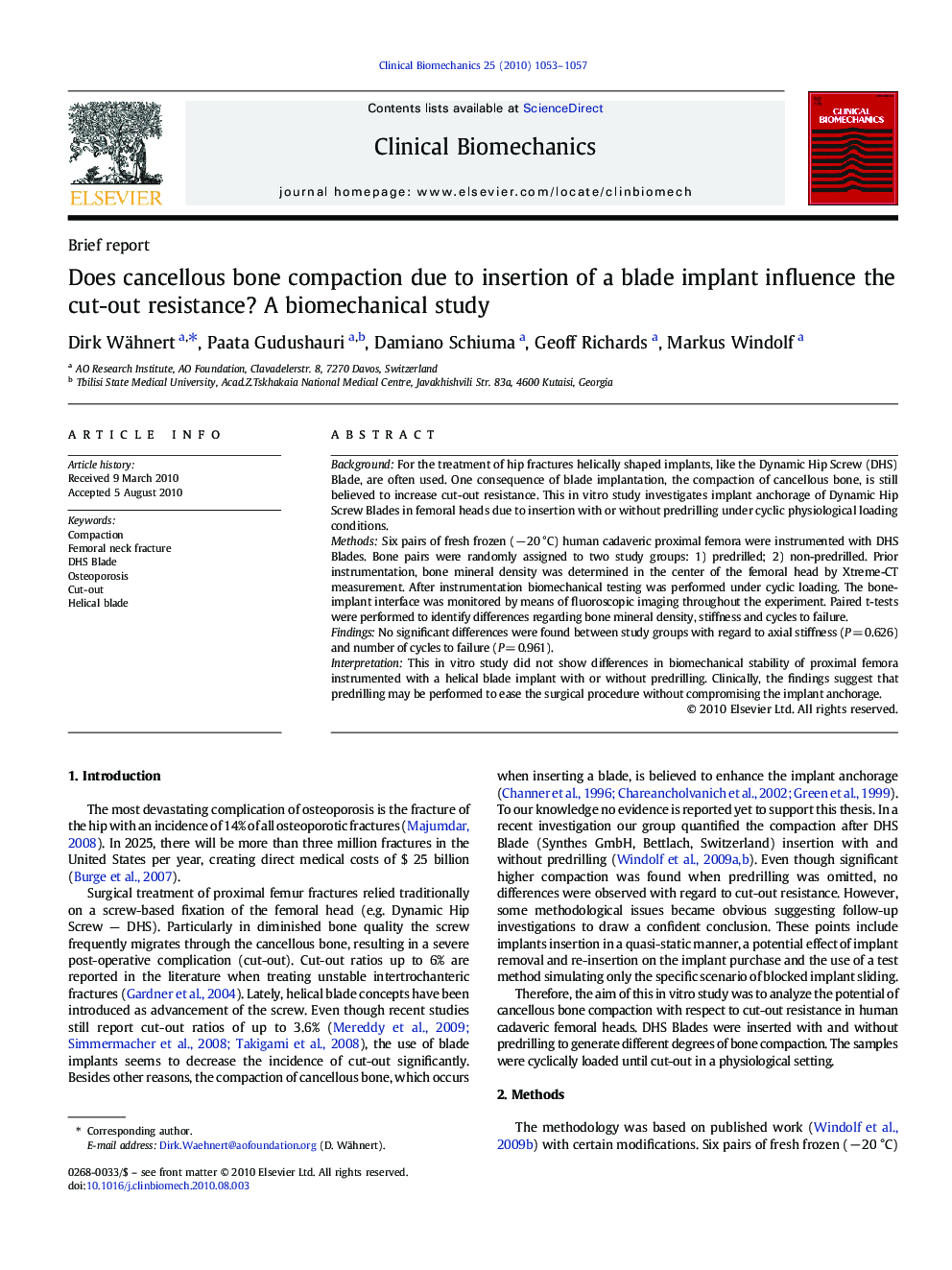| Article ID | Journal | Published Year | Pages | File Type |
|---|---|---|---|---|
| 4050893 | Clinical Biomechanics | 2010 | 5 Pages |
BackgroundFor the treatment of hip fractures helically shaped implants, like the Dynamic Hip Screw (DHS) Blade, are often used. One consequence of blade implantation, the compaction of cancellous bone, is still believed to increase cut-out resistance. This in vitro study investigates implant anchorage of Dynamic Hip Screw Blades in femoral heads due to insertion with or without predrilling under cyclic physiological loading conditions.MethodsSix pairs of fresh frozen (− 20 °C) human cadaveric proximal femora were instrumented with DHS Blades. Bone pairs were randomly assigned to two study groups: 1) predrilled; 2) non-predrilled. Prior instrumentation, bone mineral density was determined in the center of the femoral head by Xtreme-CT measurement. After instrumentation biomechanical testing was performed under cyclic loading. The bone-implant interface was monitored by means of fluoroscopic imaging throughout the experiment. Paired t-tests were performed to identify differences regarding bone mineral density, stiffness and cycles to failure.FindingsNo significant differences were found between study groups with regard to axial stiffness (P = 0.626) and number of cycles to failure (P = 0.961).InterpretationThis in vitro study did not show differences in biomechanical stability of proximal femora instrumented with a helical blade implant with or without predrilling. Clinically, the findings suggest that predrilling may be performed to ease the surgical procedure without compromising the implant anchorage.
